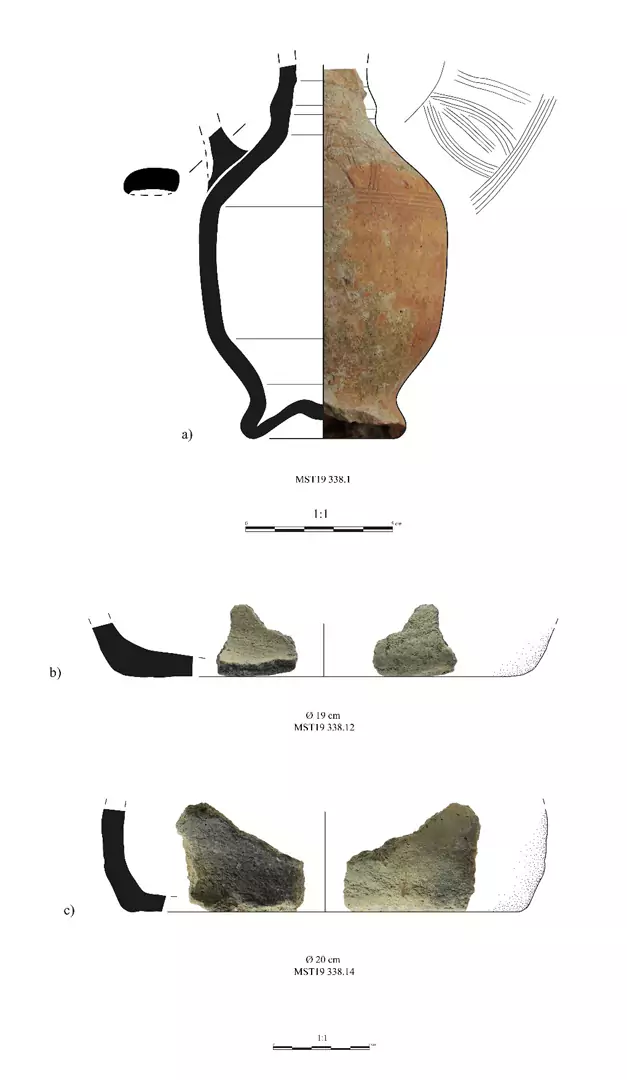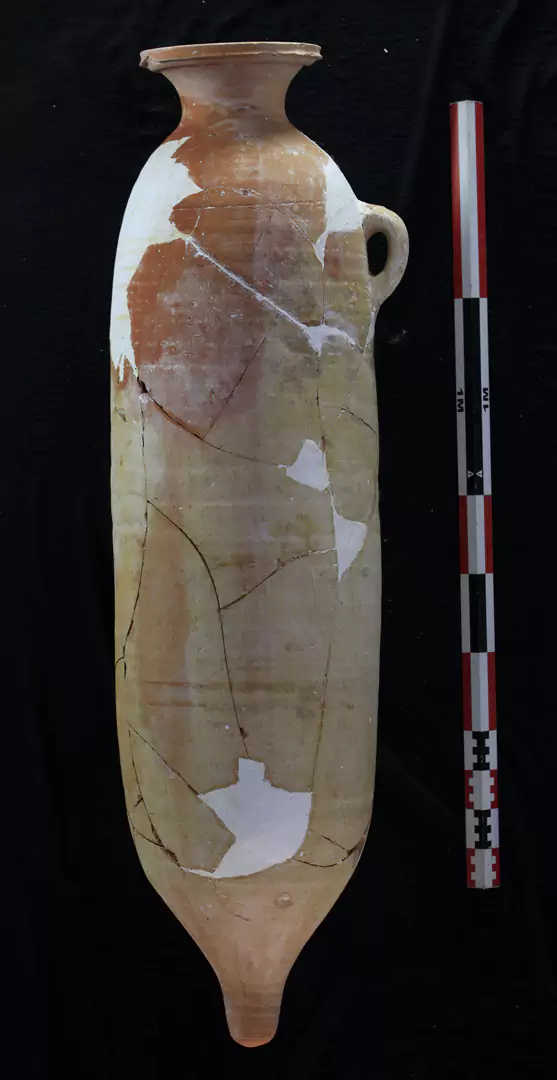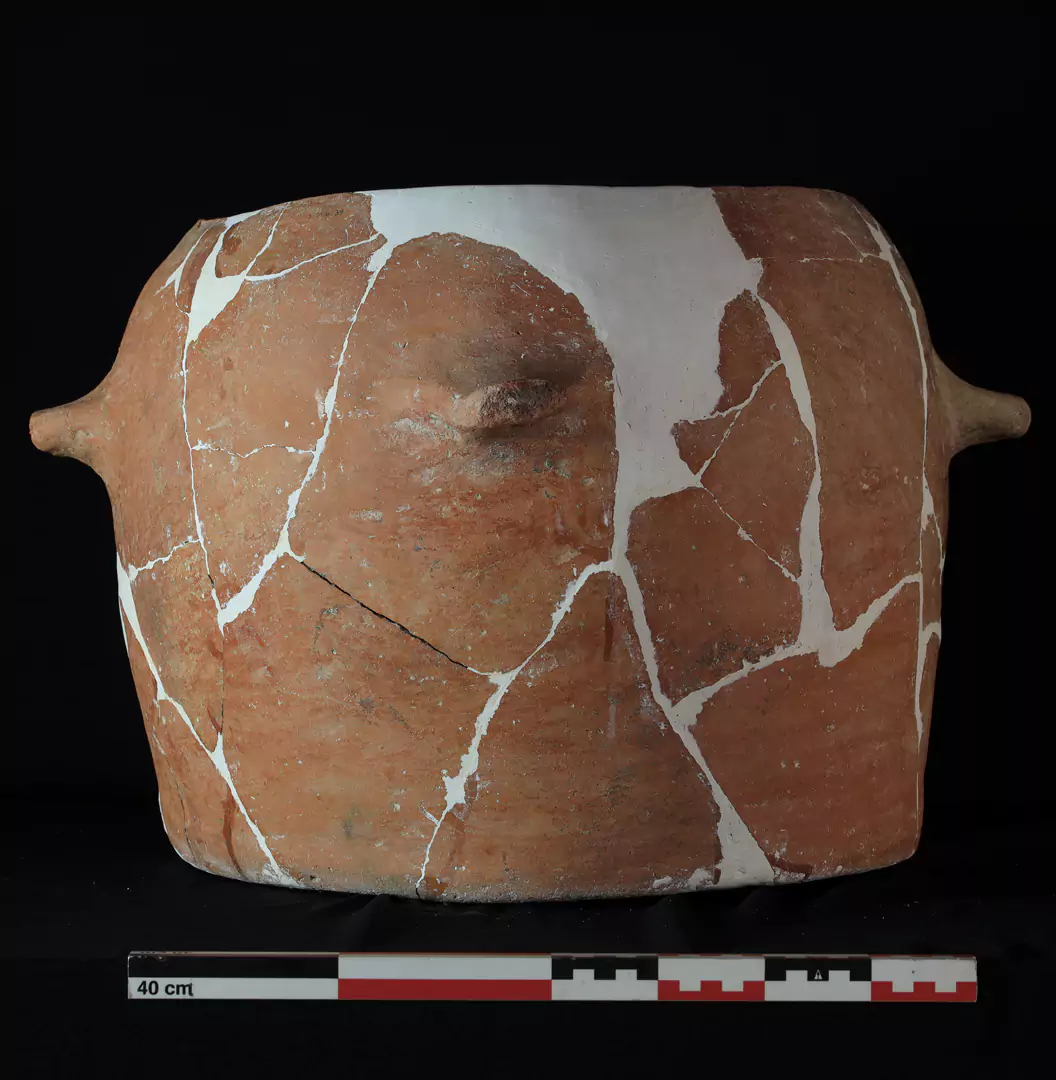
16 Ceramics in the study of economic life at Musti
Pottery, as expected, constitutes the most abundant category of finds at the site. During the project, approximately 40,000 pottery fragments, weighing around 1.8 tons, were analyzed by a team of five specialists and two students. This analysis included traditional chrono-typological, quantitative, and petrographic assessments.
The earliest strata at the site are mainly represented by handmade wares, which, due to their longevity of use, are challenging to date precisely. Luckily, radiocarbon results suggest that occupation may have begun as early as the 4th century BC (possibly even the 6th century BC). Later, two distinct time horizons are evident in the data: the first spanning from the 1st century BC to the early 2nd century AD, and the second, corresponding to the primary phase of functioning of the most of city's Roman public monuments, dating from the mid-2nd to early 3rd century AD.
In most trenches, material from the 4th to 6th centuries AD is quantitatively the most abundant, which aligns well with patterns observed in the city's hinterland. However, this occupation horizon is primarily associated with secondary deposits, such as refuse pits and unsealed usage layers from daily and productive activities. The Late Antique ceramics largely align with regional material culture profile of the Medjerda Valley, showing limited connections to coastal influences.
The site’s occupation continued without interruption into the Early Islamic period. Particularly significant is the identification of an 8th-century horizon, a period often elusive in regional archaeological records. The presence of early glazed and cream wares suggests continuity into the Aghlabid period and possibly the early Fatimid period. During this phase, with the emergence of agro-pastoral activities in areas once occupied by Late Antique structures, Musti seems to have transitioned from an urban center to a more rural settlement. The site appears to have been abandoned after the 12th century, a development that diverges from the trajectory observed at the neighboring site of Dougga.
Ceramic studies in the Musti region
The pottery records collected during regional reconnaissance remain a primary source for assessing the dynamics of settlement evolution. However, our analysis is significantly influenced by uneven levels of knowledge across various periods.
The pre-Roman occupation of the region is poorly attested in surface materials, with only a few isolated fragments of Punic amphorae dated to the mid-2nd to 3rd centuries BC. From the 2nd century AD onward, identifiable sherds become more numerous. Settlement activity appears to peak between the 5th and 6th centuries, evidenced by an abundance of local and regional variants of African Red Slip Ware D. It is notable that around 40% of the sites showing pottery finds from post-4th century contexts can be interpreted as single-period sites, with occupation limited to the 4th–6th/early 7th centuries.
Settlement density began to decline in the 7th century, though many rural sites likely continued to be inhabited, albeit on a smaller scale. The process of abandonment accelerated sharply in the latter half of the century, as indicated by a marked drop in the number of active sites. By the 8th century, the region appears almost completely deserted; however, this perception is likely due to a lack of chronological indicators, limiting our ability to define this period ceramically. Notably, 8th-century phases of occupation have been successfully identified within the Musti’s urban contexts.
With the introduction of well-dated glazed wares, a resurgence in settlement can be observed starting in the mid-9th century, continuing until the late 11th century and, in some cases, the 12th or even 13th century. Importantly, about half of the sites displaying Aghlabid and/or Fatimid occupation does not show evidence of earlier habitation.
Beyond this period, trends in settlement patterns become difficult to trace until the 19th century, likely due to the absence of identifiable chronological markers. The lack reliable time indicators does not necessarily imply the long-lasting settlement gap. Agricultural potential of the region seems to have been revitalized in the late 19th and early 20th centuries, marked by the establishment of numerous French "latifundia".



